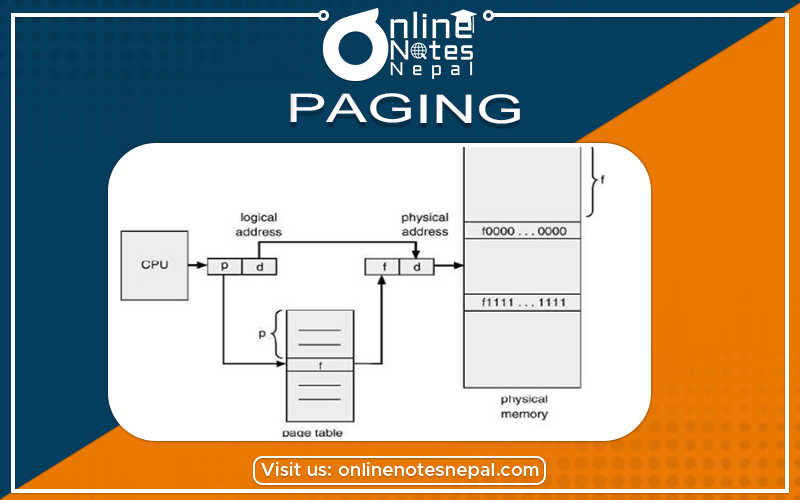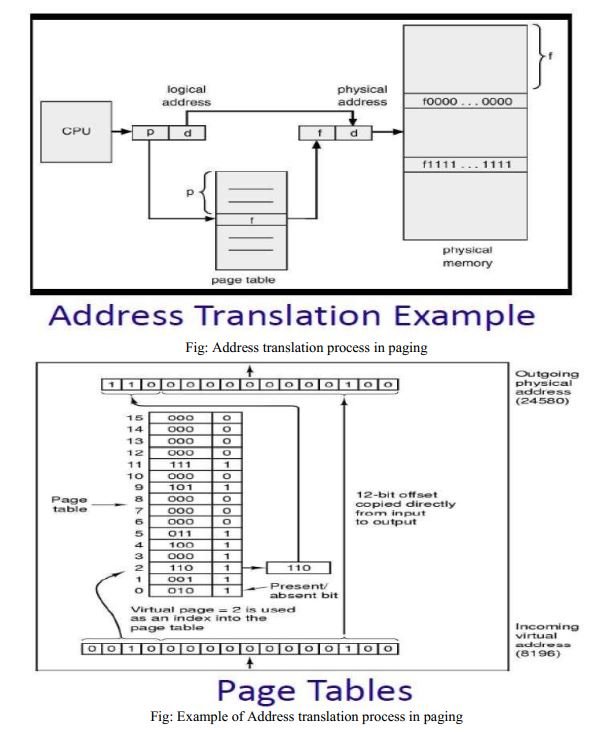Published by: Zaya
Published date: 22 Jun 2021

- divides processes into a fixed-sized pages
-Then selectively allocates pages to frames in memory, and
-manages (moves, removes, reallocates) pages in memory
OS needs to do two things
1. Mapping the pages to frame, maintain a page table
2. Translate the virtual address (contiguous) into a physical address (not so easy as the physical address for a process is scattered all over the memory)
The address generated by CPU (logical address) is divided into:
Page Fault
Page hit
Whenever a process refers to a page that is present in memory, such a condition is known as page hit.
Page table
A page table is the data structure used by a virtual memory system in a computer operating system to store the mapping between virtual addresses and physical addresses
Frame
Frame is a fixed sized block in physical memory space.

• Paging reduces external fragmentation, but still suffers from internal fragmentation.
• Paging is simple to implement and assumed as an efficient memory management technique.
• Due to the equal size of the pages and frames, swapping becomes very easy.
• Page table requires extra memory space, so may not be good for a system having small RAM.